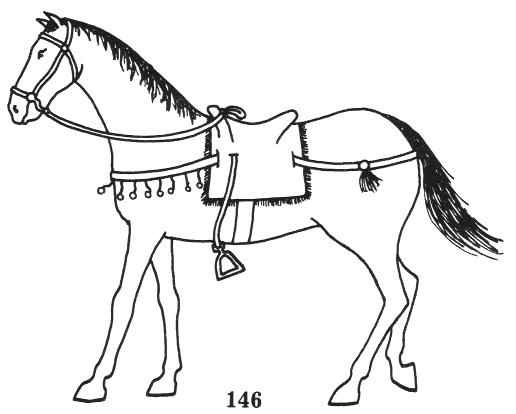
Shop Amazon - Create an Amazon Baby Registry
7TH-10TH CENTURY CAVALRY HORSE
An extract from Armies of the Dark Ages 600-1066by Ian Heath



146. 7TH-10TH CENTURY CAVALRY HORSE
This shows typical harness of the period. Based on 9th and 10th century Carolingian examples it comprises girth, breast and rump straps, which seem to have been standard. The hanging bells and ornaments, often suspended from the saddle as well, are characteristic of Visigoths, Franks, Saxons, Scandinavians and Slavs. Arab horses were often similarly ornamented.
The stirrup, worn short, would have been absent at the beginning of this period, being only generally adopted in Europe in the late-8th century and by the Arabs in the late-7th century.
The wood and leather saddle is low, but already beginning to develop before and behind into the type described under 147. However, even as early as the 9th century some sources occasionally show saddles which appear to have definite arcons of almost mediaeval type. Saddle-cloths appear to have been the same size or even smaller than the saddle since they are rarely visible in contemporary sources.
In Europe at least the best war-horses were stallions, though mares were often ridden for the simple reason that they were cheaper.